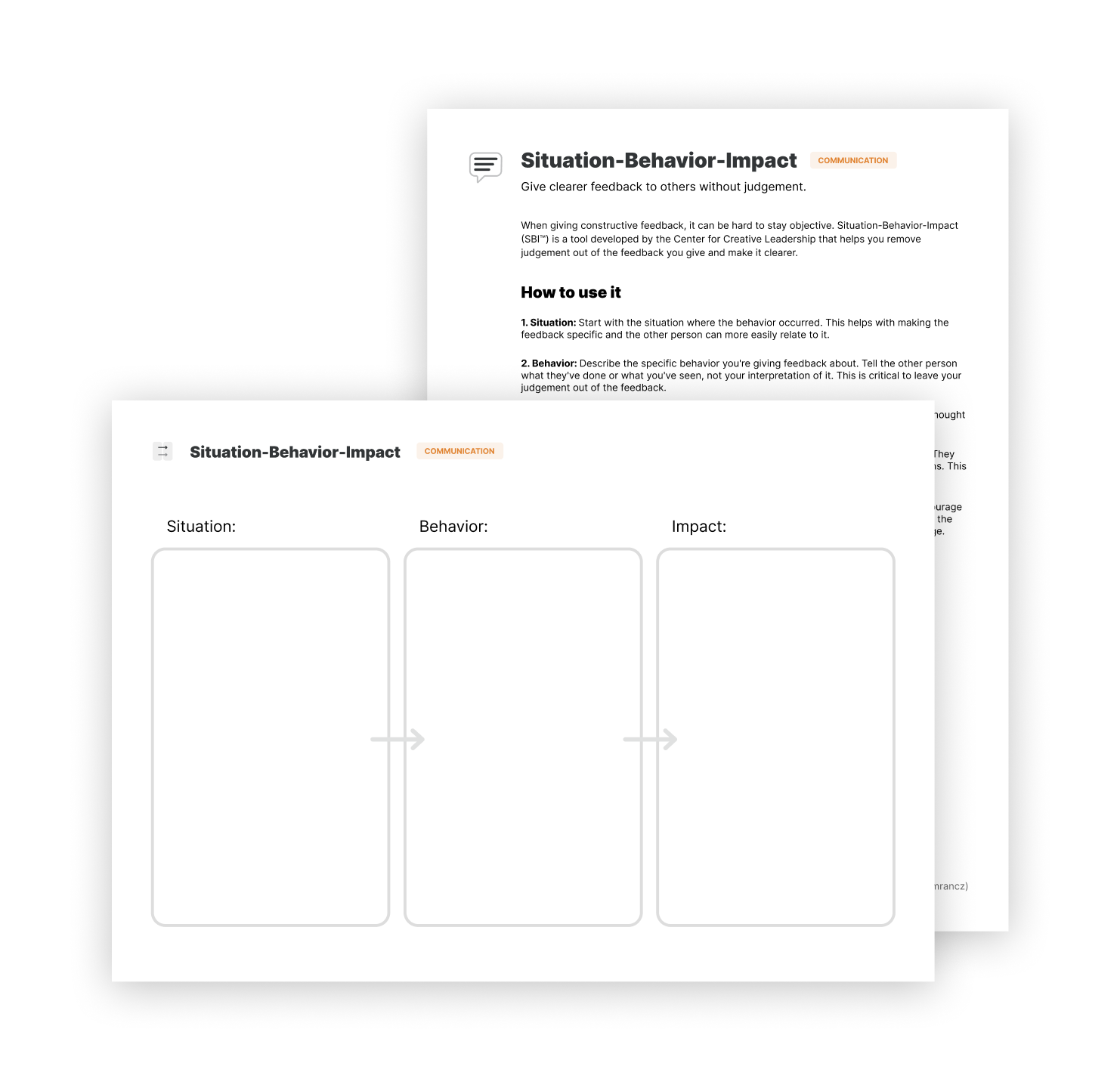Situation-Behavior-Impact
COMMUNICATIONWhen we perceive someone's behavior negatively, we often jump to conclusions and make assumptions about why someone acted the way they did. When giving feedback to that person, it can be hard to stay objective. Situation-Behavior-Impact (SBI™) is a tool developed by the Center for Creative Leadership that helps you remove judgement out of the feedback you give and make it clearer.
This tool works best for giving negative feedback as it can make the recipient less defensive about it, but it can absolutely be used for positive feedback, too.
How it works
SBI™ offers a simple few steps along which you can structure the feedback you want to give.
1. Situation
Start with the situation where the behavior occurred. This helps with making the feedback specific and the other person can more easily relate to it.
2. Behavior
Describe the specific behavior you're giving feedback about. Tell the other person what they've done or what you've seen, not your interpretation of it. This is critical to leave your judgement out of the feedback.
3. Impact
Explain what kind of impact their behavior had. This can range from what you thought and felt and why, to broader impact on others or the whole team.
Plus: Intent
Sometimes, you may want to ask what the intention was behind their behavior. They might have a sound reason that you don't know about or is different from your assumptions.
This can greatly help explain the gap between their intent and the actual impact.
Encourage reflection
Feedback is only useful when it's considered and acted upon. Encourage the other person to reflect on what you've said and think how they might act differently in the future.
If you asked about their intent, it can be a good starting point for discussing what to change.
Example
Let's see what giving feedback using this tool can look like. Imagine a manager talking to their report after a recent meeting.
They start with the situation: "In yesterday's product review meeting, when you were giving an update for your team..."
Then they describe their report's behavior: "...you didn't share any recent learnings about how our customers use this new feature..."
And share the impact the behavior had: "...which made me worry if you've been talking to our customers recently at all."
Finally, they ask about their intent: "Why didn't you share anything this time?"
This can continue with the discussion about the gap between the intent and the impact.
Takeaway
Use the SBI��™ tool to give clearer feedback in a non-judgemental way. Frame the feedback within a situation, describe the specific behavior and share the impact the behavior had. You can also follow-up by asking about the intent to start a healthy and objective discussion.
Put this to practice
I've created a template (in PDF and Miro) for applying Situation-Behavior-Impact in practices. It includes a step-by-step reference guide with an example.
You can get it with Untools Vault which gives you instant access to all Untools premium templates and monthly exclusive deep-dives about thinking tools.
Preview of the template:

SBI and Situation-Behavior-Impact are trademarks of the Center for Creative Leadership.